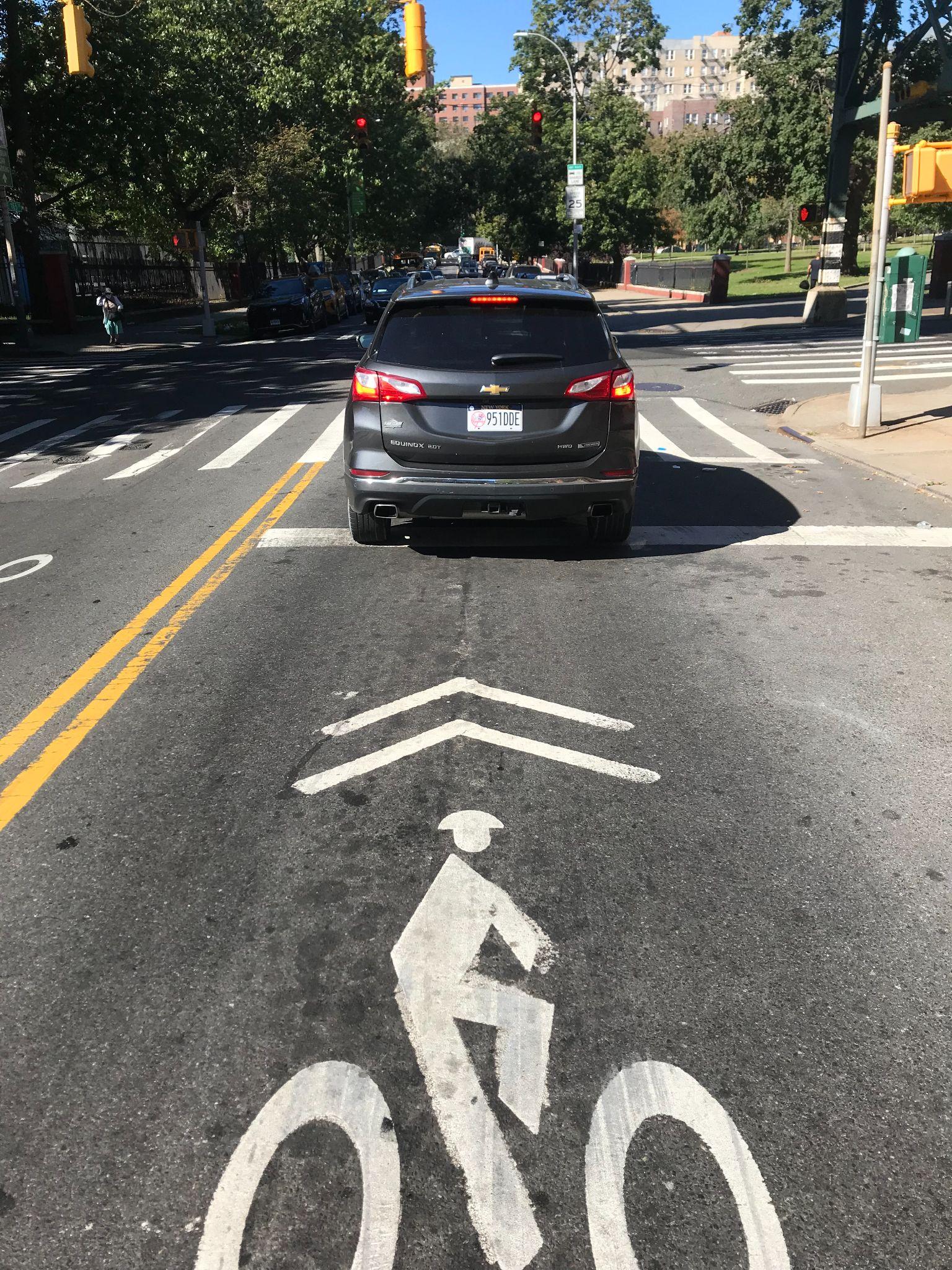South Bronx residents disagree about whether protected bike lanes in their neighborhoods are a good thing or just another inconvenience on their congested streets. Bikers and their supporters see protected lanes as a necessary safety measure, while opponents say they take up scarce parking spaces and endanger pedestrians.
(Para leer un articulo en español, “¿Necesarios o inconvenientes? Continúan los debates sobre los carriles protegidos para ciclistas en el Bronx,” vaya a esta versión).
On October 23rd, local residents assembled for a zoom to protest a proposal by the city to build a bike lane that would extend between E. 139th and 149th streets on Jackson Ave. Some residents and members of Community Board 1 say the new lane would force around 150 parking spaces to be eliminated.
Some attendees at Board 1’s September’s virtual meeting argued that bikes and protected lanes are meant to serve newcomers from Manhattan, not longtime Bronxites.
Protests against bike lanes are not new in New York City. Last year Upper West Residents sued the city to stop bike lanes from being installed on Central Park West. The same happened in Park Slope ten years ago, and when the city’s first bike lanes were installed during the Ed Koch administration.
City Councilman Fernando Cabrera says that the Bronx urgently needs protected bike lanes. He pointed out that only 3% of the borough’s bike lanes are protected, compared with 50% of the lanes in Manhattan.
Daniel Adorno, the owner of Daniel’s Bike Shop on Westchester Ave., says the most common accidents his bike repair shop gets are from bikers who were hit by a vehicle, or who fell off their bikes while riding on poorly maintained streets.
According to a report released by the Department of Transportation, just 4.7% of New Yorkers’ daily commutes occur in the Bronx. But the NYPD reported in 2021 that 8% of the city’s bike deaths and accidents took place in the borough, double the number of trips.
In comparison, 39% of the city’s daily bike trips took place in Manhattan, but just 17% of the deaths and 20% of the injuries resulting from bike accidents occurred.
On Bronx roadways like Tremont Avenue, “you feel safe for two seconds, and in the middle of a war for the rest of the journey,” said Judith “Judi” Desire, the founder of advocacy group Uptown & Boogie. Protecting bikers should go beyond “painting colors in the city streets; there is a need to reconstruct the streets and change the culture in the city,” she said.
However, for Desire, the need to invest to “connect bikes to different forms of public transportation” is even more urgent than adding protected bike lanes.
“Manhattan has more bike culture because it has the infrastructure,” said Desire. “The Bronx needs more infrastructure.”
This year, non-profits such as Bike New York and Summer Streets worked with State Sen. Alessandra Biaggi to draft S4943 law, calling on the MTA to promote biking and make it safer.
A spokeswoman for Biaggi’s office said the goal is to “change the culture,” and “to encourage the use of bikes in an accessible and secure environment,” by guaranteeing parking for bikes at all subway and train stations, and requiring the MTA create pedestrian and bike access on all of the city’s bridges.
The bill has been approved by the state assembly and senate, and now awaits Gov. Kathy Hochul’s approval to become law.
For Marco Saavedra, whose family owns La Morada Mexican restaurant on Willis Ave., the safety bike lanes provide for the South Bronx’s many delivery workers who have helped local restaurants survive the economic impact of the pandemic, is a factor some opponents overlook. Many delivery bikers are migrants from Mexico and Central America, who contend with the dangers of vehicles they share the roads with. In addition, many have been violently assaulted and had their electric bikes stolen, but are afraid to report those incidents to police.
For bike delivery workers and commuters alike, protected bike lanes are a necessity.
“We must acknowledge that biking happens, and it needs attention,” she said.

